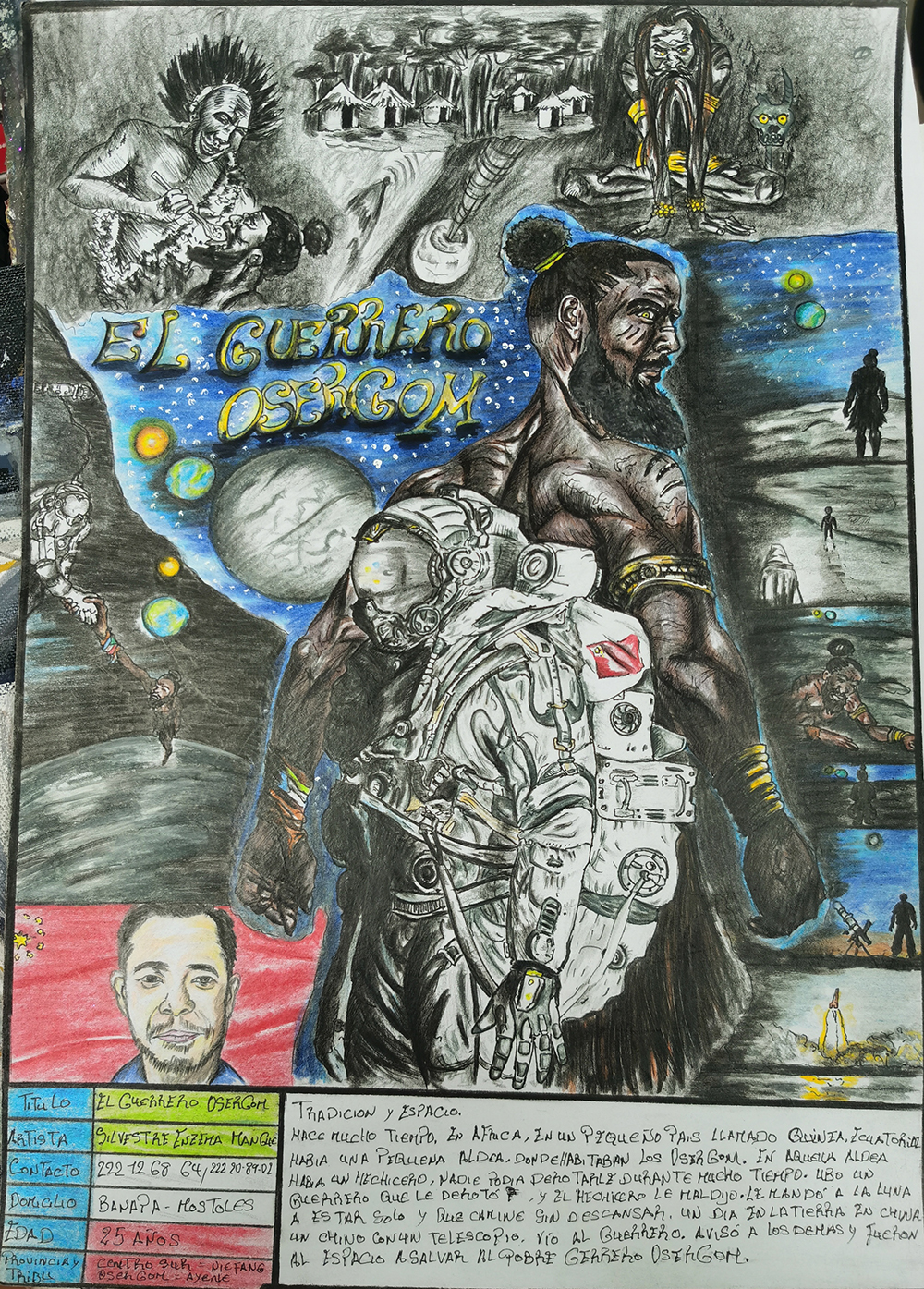
'The Osergom Warrior' by Silvestre Enzema Mangue from Equatorial Guinea (Third Prize). The work is inspired by the Osergom tribe, to which the artist belongs. In this work, a Chinese astronaut and an Osergom warrior stand back-to-back in the vast universe, communicating with each other across time and space. /Photo provided to CGTN
'The Osergom Warrior' by Silvestre Enzema Mangue from Equatorial Guinea (Third Prize). The work is inspired by the Osergom tribe, to which the artist belongs. In this work, a Chinese astronaut and an Osergom warrior stand back-to-back in the vast universe, communicating with each other across time and space. /Photo provided to CGTN
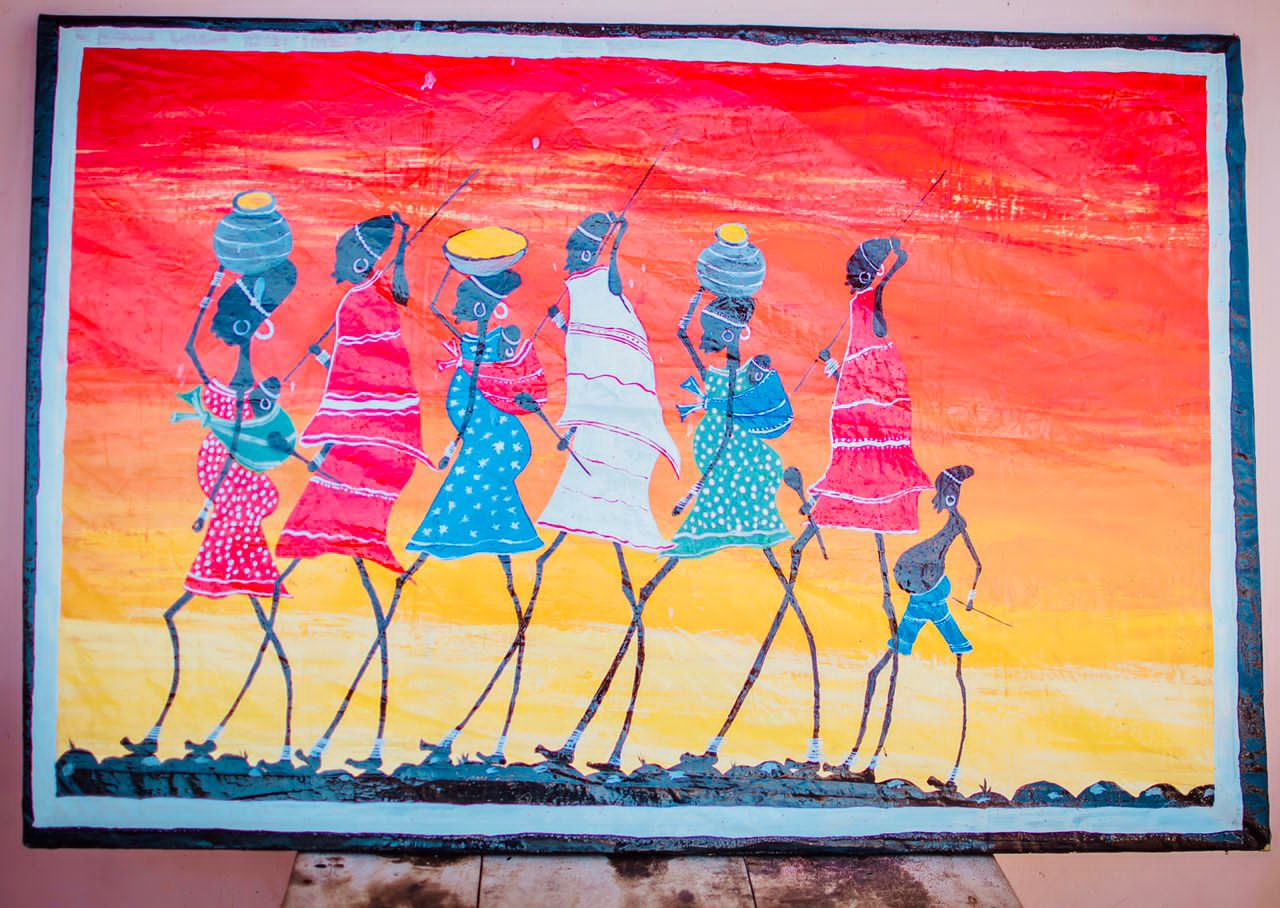
'Maasai' by Isack L. Sayi from Tanzania (Second Prize). The painter has vividly portrayed a group of Maasai women walking along a road. Northern Tanzania and some parts of Kenya are home to the pastoralist lifestyle tribe called the Maasai. This ethnic group is famous for its distinctive customs and dresses. /Photo provided to CGTN
'Maasai' by Isack L. Sayi from Tanzania (Second Prize). The painter has vividly portrayed a group of Maasai women walking along a road. Northern Tanzania and some parts of Kenya are home to the pastoralist lifestyle tribe called the Maasai. This ethnic group is famous for its distinctive customs and dresses. /Photo provided to CGTN
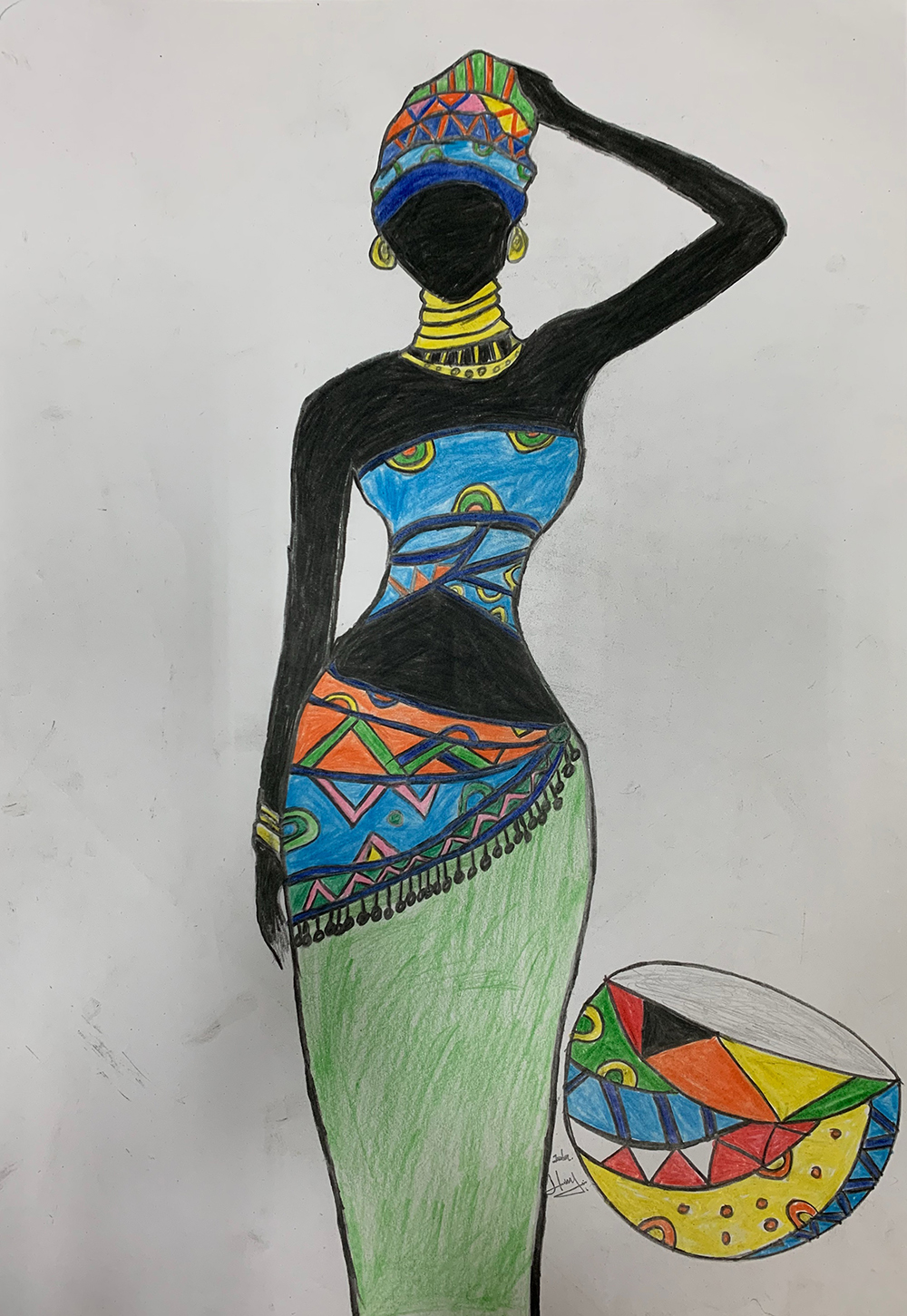
'Heritage' by Edjamtoli Mazama Erso from Togo (Second Prize). This portrait of an African woman uses crayons and pencils to show the texture and details of her characteristic dress and colorful accessories, conveying the message that traditional fashion never goes out of style. /Photo provided to CGTN
'Heritage' by Edjamtoli Mazama Erso from Togo (Second Prize). This portrait of an African woman uses crayons and pencils to show the texture and details of her characteristic dress and colorful accessories, conveying the message that traditional fashion never goes out of style. /Photo provided to CGTN
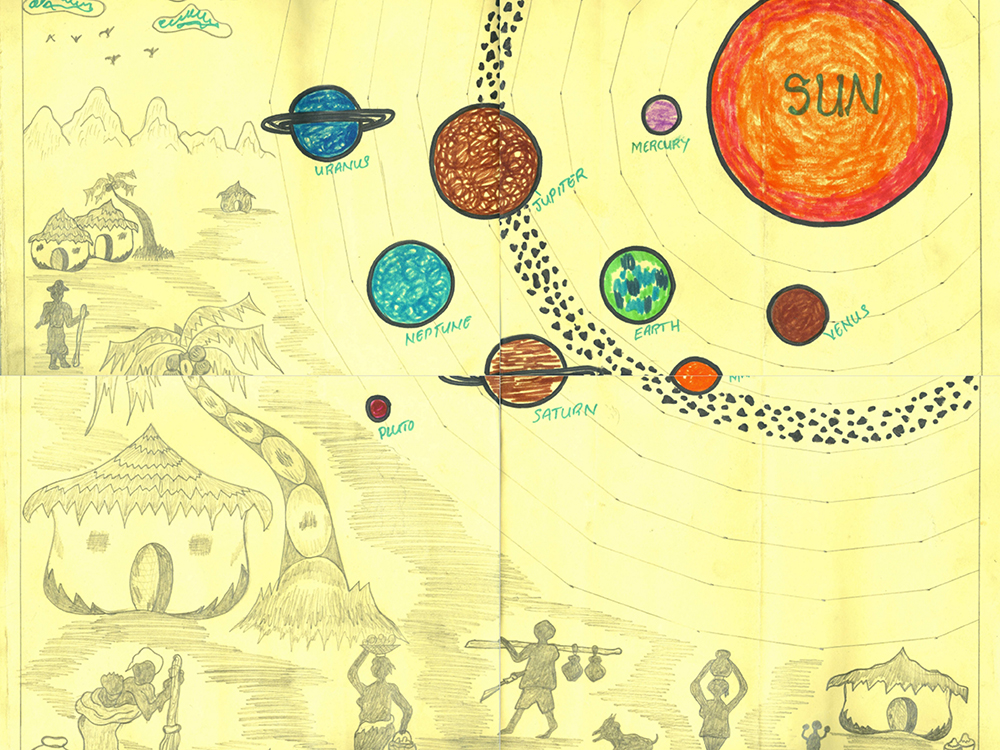
'My Dream' by Haja Fatu Turay from Sierra Leone (Third Prize). On the left side of the picture, Turay used pencils to draw a sketch of an African village and farmers. On the right side, the artist used colored pens to depict the solar system. This is a picture connecting the past, the present and the future. /Photo provided to CGTN
'My Dream' by Haja Fatu Turay from Sierra Leone (Third Prize). On the left side of the picture, Turay used pencils to draw a sketch of an African village and farmers. On the right side, the artist used colored pens to depict the solar system. This is a picture connecting the past, the present and the future. /Photo provided to CGTN
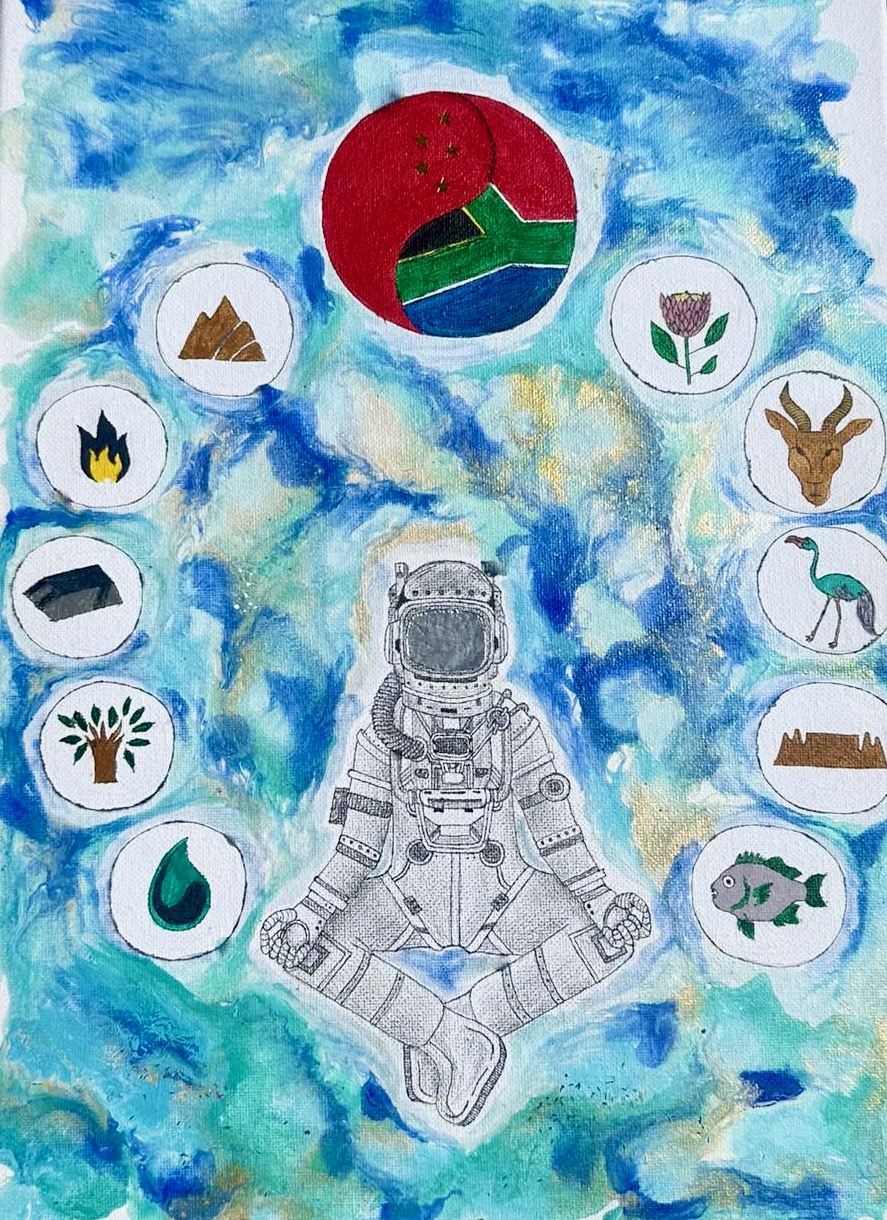
'Harmony' by Sinovuyo Mkula from South Africa (First Prize). This artwork incorporates distinctive symbolic elements from South Africa, and also bridges the concept of traditional Chinese medicine with modern science and space exploration. /Photo provided to CGTN
'Harmony' by Sinovuyo Mkula from South Africa (First Prize). This artwork incorporates distinctive symbolic elements from South Africa, and also bridges the concept of traditional Chinese medicine with modern science and space exploration. /Photo provided to CGTN
An awards ceremony for the "My Dream" Painting Competition for African teenagers will take place on Wednesday in Beijing, with a Chinese taikonaut attending as a special guest.
The competition was hosted by the Secretariat of the Chinese Follow-up Committee of the Forum on China-Africa Cooperation (FOCAC) and the China Manned Space Agency (CMSA).
Since last week, CGTN has been showcasing a series of young African artists' works chosen from over 2,000 entries from 42 countries.
Let's take a look at those paintings portraying African culture in the modern world.